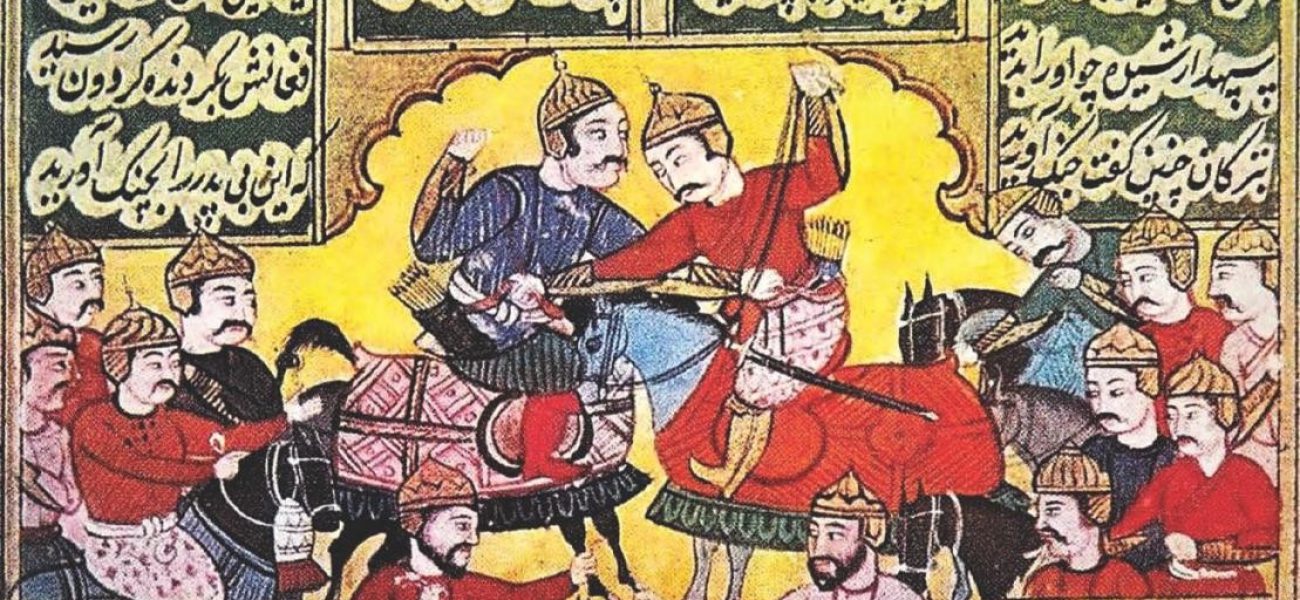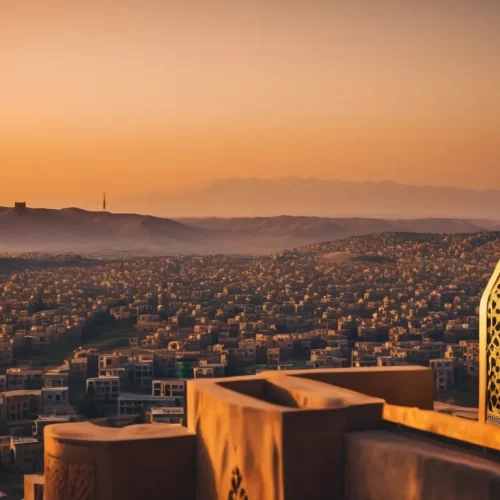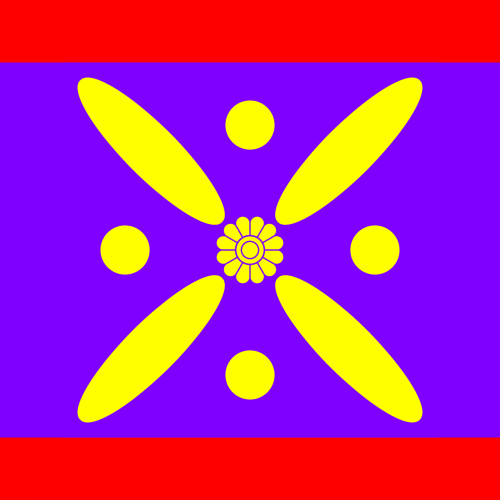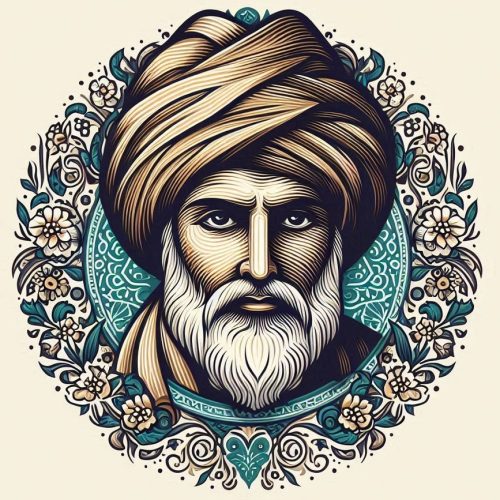The Persian language, with its rich history, poetic elegance, and cultural significance, holds a treasure trove of interesting facts and fun tidbits that illuminate its unique charm and enduring appeal. From its ancient origins to its modern manifestations, Persian continues to captivate learners and enthusiasts around the world with its linguistic beauty and cultural depth. In this article, we embark on a journey to uncover some of the most intriguing aspects of the Persian language, from its script and phonetics to its vocabulary and idiomatic expressions.
Script and Writing System
The Persian language is written using the Arabic script, which is an abjad script with a rich history spanning centuries. The Arabic script was originally developed for the Arabic language but has been adapted to write numerous languages, including Persian, Urdu, and Pashto, among others. In the case of Persian, the Arabic script has undergone modifications and adaptations to accommodate the phonetic nuances and unique sounds of the language.
One of the notable features of the Persian script is its use of additional letters and diacritic marks to represent sounds that are specific to Persian but not found in Arabic. For example, Persian includes letters such as “پ” (p), “چ” (ch), “گ” (g), and “ژ” (zh), which are not present in the standard Arabic script. These modifications enhance the script’s ability to accurately represent the phonetic nuances of Persian pronunciation, ensuring clarity and precision in written communication.
Furthermore, Persian script is written from right to left, which is a characteristic feature of many scripts in the Middle East and Central Asia. This directionality is a result of historical influences, as Persian script evolved from the Aramaic script, which also had a right-to-left orientation. While this may initially seem unfamiliar to those accustomed to left-to-right writing systems, Persian script’s right-to-left orientation becomes intuitive with practice and immersion in the language.
In addition to its distinctive letters and directionality, Persian script is known for its elegant and flowing calligraphic styles, which have been refined and perfected over centuries by skilled calligraphers. Persian calligraphy is considered a form of artistic expression in its own right, with different styles and variations, such as Nasta’liq, Shekasteh, and Naskh, each offering a unique aesthetic and visual appeal.
Overall, the script and writing system of the Persian language reflect the rich cultural heritage and artistic sensibilities of Iran and its people. Through its elegant calligraphy, precise letterforms, and adaptations for phonetic accuracy, Persian script embodies the beauty and complexity of the language it represents, serving as a timeless symbol of Iranian identity and cultural pride.
Linguistic Influence
The Persian language, with its rich vocabulary, expressive syntax, and poetic elegance, has exerted a profound influence on the linguistic landscape of the regions where it has been spoken and studied. Through centuries of cultural exchange, trade, and intellectual interaction, Persian has contributed significantly to the lexicons and grammatical structures of neighboring languages, leaving a lasting imprint on their linguistic heritage.
Loanwords and Borrowings
One of the primary ways in which Persian has influenced other languages is through the borrowing of words and phrases. Persian loanwords are found in numerous languages, particularly those spoken in regions where Persian culture and civilization have had a historical presence. These loanwords encompass a wide range of domains, including literature, science, religion, administration, and everyday life.
For example, Arabic, the language of Islam and the Quran, has absorbed a significant number of Persian loanwords, particularly in domains such as literature, philosophy, and administration. Words like “شاه” (shah – king), “دولت” (dawlat – state), and “علم” (ilm – knowledge) are just a few examples of Persian loanwords that have enriched the Arabic vocabulary and expanded its expressive range.
Similarly, Turkish, spoken in modern-day Turkey and parts of Central Asia, has borrowed extensively from Persian, especially during the Ottoman period. Persian loanwords are prevalent in Turkish literature, poetry, and administrative terminology, reflecting the cultural and intellectual influence of Persian civilization on the Ottoman Empire and its successor states.
In the Indian subcontinent, Urdu, a language with Persian and Arabic influences, owes much of its vocabulary and literary tradition to Persian. Urdu poetry, in particular, is replete with Persian loanwords and stylistic conventions, showcasing the deep cultural and linguistic ties between Persian and Urdu-speaking communities.
Structural Influence
In addition to loanwords, Persian has also influenced the grammatical structures and syntactic patterns of neighboring languages. The influence of Persian on Arabic syntax, for example, is evident in the use of complex sentence structures, rhetorical devices, and poetic conventions borrowed from Persian literature.
Similarly, Turkish syntax has been shaped by Persian literary conventions, particularly in the realm of poetry and prose. Turkish poets and writers often emulate Persian poetic forms, such as the ghazal and the masnavi, and incorporate Persian stylistic elements into their own works, creating a synthesis of linguistic traditions that reflects the cultural richness of the region.
Cultural and Intellectual Exchange
Beyond its linguistic influence, Persian has served as a vehicle for cultural and intellectual exchange among diverse communities and civilizations. Persian literature, with its rich tradition of poetry, philosophy, and historical chronicles, has been translated and studied by scholars and enthusiasts around the world, fostering cross-cultural dialogue and mutual understanding.
Through its literature, Persian has disseminated ideas, values, and aesthetic sensibilities that transcend linguistic and cultural boundaries, enriching the intellectual heritage of humanity as a whole. Whether through the mystical poetry of Rumi, the philosophical treatises of Avicenna, or the historical epics of Ferdowsi, Persian literature continues to inspire and captivate audiences with its universal themes and timeless wisdom.
The linguistic influence of Persian extends far beyond its native speakers, encompassing diverse languages and cultures across the Middle East, Central Asia, and beyond. Through its loanwords, structural influence, and role in cultural and intellectual exchange, Persian has left an indelible mark on the linguistic heritage of the regions where it has been spoken and studied, reflecting the enduring legacy of Iranian civilization and its contributions to human civilization.
Poetry and Literature
The Persian language boasts a vibrant tradition of poetry and literature that spans over a millennium, characterized by its poetic elegance, emotional depth, and profound philosophical insights. Persian literature has played a central role in shaping the cultural identity and intellectual discourse of Iran and has garnered admiration and appreciation from audiences around the world.
Classical Poetry
Classical Persian poetry flourished during the medieval period, reaching its zenith in the works of renowned poets such as Rumi, Hafez, Saadi, and Omar Khayyam. These poets, often referred to as the “quartet of Persian poetry,” explored themes of love, mysticism, nature, and the human condition with unparalleled eloquence and sophistication.
Rumi, widely regarded as one of the greatest mystical poets of all time, composed timeless verses that continue to resonate with readers across cultures and generations. His magnum opus, the Masnavi, is a masterpiece of Sufi literature, offering spiritual guidance and philosophical insights through allegorical tales and mystical parables.
Hafez, known as the “Tongue of the Invisible,” captivated audiences with his ghazals, or lyrical poems, which explore themes of love, longing, and spiritual enlightenment. His Divan, a collection of ghazals and rubaiyat (quatrains), remains a cornerstone of Persian literature and a source of inspiration for poets and lovers alike.
Saadi, celebrated for his wisdom and moral teachings, composed works such as the Gulistan (The Rose Garden) and the Bustan (The Orchard), which blend poetry, prose, and parables to impart timeless lessons on ethics, human behavior, and social justice.
Omar Khayyam, best known for his Rubaiyat, or quatrains, infused his poetry with philosophical reflections on the transience of life, the nature of existence, and the pursuit of earthly pleasures. His verses, translated into numerous languages, have captivated readers with their existential themes and poignant imagery.
Mystical and Sufi Poetry
Persian literature is also renowned for its mystical and Sufi poetry, which reflects the profound spiritual insights and ecstatic experiences of mystics and spiritual seekers. Sufi poets such as Attar, Sanai, and Jami used poetry as a means of expressing their devotion to the Divine and their quest for spiritual enlightenment.
Attar, in his magnum opus, the Conference of the Birds, takes readers on a mystical journey through allegorical tales and symbolic imagery, exploring themes of spiritual transformation and the quest for union with the Beloved.
Sanai, known for his poetic masterpiece, the Walled Garden of Truth, delves into the depths of the human soul and the mysteries of divine love, offering readers profound insights into the nature of existence and the path to inner awakening.
Jami, celebrated for his lyrical poetry and philosophical depth, composed works such as the Haft Awrang (Seven Thrones) and the Yusuf and Zulaikha, which blend Persian and Islamic traditions with universal themes of love, morality, and spiritual enlightenment.
Influence and Legacy
The influence of Persian poetry and literature extends far beyond the borders of Iran, inspiring writers, poets, and intellectuals around the world. Translations of Persian classics into languages such as English, French, and German have introduced Western audiences to the beauty and depth of Persian literary masterpieces, fostering cross-cultural dialogue and appreciation for the universal themes and timeless wisdom found in Persian poetry.
Moreover, Persian literature continues to inspire contemporary writers and poets who draw upon its rich literary heritage to create new works that reflect the complexities of modern life while honoring the traditions of the past. From the streets of Tehran to the literary salons of Paris, Persian literature remains a source of inspiration and fascination for lovers of poetry and seekers of truth everywhere.
Persian poetry and literature occupy a central place in the cultural and intellectual landscape of Iran and beyond, serving as a timeless testament to the beauty, depth, and resilience of the human spirit. Through its rich tradition of classical and mystical poetry, Persian literature continues to enchant and inspire readers with its profound insights, timeless wisdom, and enduring legacy of literary excellence.
Idiomatic Expressions and Proverbs
The Persian language is adorned with a plethora of colorful idiomatic expressions and proverbs, each offering a glimpse into the cultural values, wisdom, and humor of Iranian society. These expressions, passed down through generations, enrich the language with vivid imagery, wit, and insight, allowing speakers to convey complex emotions and ideas with brevity and flair.
Everyday Expressions
Persian idiomatic expressions often draw upon familiar objects, animals, and natural phenomena to convey universal truths and observations about life. For example, the expression “خرما رو خودت بگیر” (khorma ro khodet begir), which literally translates to “take the date yourself,” is used to encourage self-reliance and initiative, akin to the English expression “take matters into your own hands.”
Similarly, the expression “آب از سر گذشته” (ab az sar gozashte, gozar) translates to “water under the bridge,” indicating a willingness to let go of past grievances or mistakes and move forward with life.
Proverbs and Sayings
Persian proverbs offer timeless wisdom and practical advice on various aspects of life, from relationships and family to work and success. These proverbs, often steeped in metaphor and allegory, reflect the collective wisdom of Iranian culture and provide valuable insights into human nature and behavior.
For example, the proverb “از آنجا که خدا رفته، از ما گذشته” (az anja ke khoda rafta, az ma gozashte) translates to “where God has gone, we have passed,” conveying the idea that some things are beyond human control and must be accepted with grace and humility.
Similarly, the proverb “همه گربهها گریبان یکسان نیستند” (hame gorbeha geryaban yeksan nistand) states that “not all cats have the same collar,” meaning that people have different capabilities, opportunities, and circumstances, and it is unfair to judge them based on a uniform standard.
Cultural Insights
Persian idiomatic expressions and proverbs offer valuable insights into Iranian culture, values, and worldview. For example, the emphasis on hospitality and generosity is reflected in expressions such as “مهمون حبیب خداست” (mehman khodast), meaning “the guest is from God,” highlighting the importance of treating guests with utmost respect and kindness.
Similarly, the reverence for wisdom and experience is evident in proverbs like “زیتون از دست دوست، خرما از دست خود” (zeyton az dast-e dust, khorma az dast-e khod), which translates to “olives from the hand of a friend, dates from one’s own hand,” suggesting that advice from a trusted friend is more valuable than one’s own efforts.
Humor and Wit
Persian idiomatic expressions often showcase the Iranians’ fondness for humor and wit, with many expressions featuring clever wordplay and double meanings. For example, the expression “با کجیاش گفتی بخور، با راستیاش گفتی بخور” (ba koji-ash gofti bekhur, ba rasti-ash gofti bekhur) humorously suggests that no matter what you say, you’ll end up getting slapped, highlighting the unpredictability of human reactions.
Similarly, the expression “هر کجا پا بگذاری، از زیر زمین بر میآید” (har koja pa gozarim, az zire zamin bar miayad) playfully suggests that “wherever we step, something springs up from under the ground,” illustrating the Iranian penchant for finding humor in life’s absurdities and contradictions.
Persian idiomatic expressions and proverbs serve as windows into the soul of Iranian culture, offering insights into its values, beliefs, and sense of humor. Whether conveying timeless wisdom, cultural insights, or playful wit, these expressions enrich the Persian language with their vivid imagery, universal truths, and enduring appeal.
Linguistic Evolution and Modernization
The Persian language, like all living languages, has evolved over time in response to social, cultural, and technological changes. While maintaining its rich literary heritage and cultural identity, Persian has also adapted to the demands of the modern world, incorporating new vocabulary, expressions, and linguistic conventions to reflect contemporary realities.
Lexical Expansion
One of the most noticeable aspects of linguistic evolution in Persian is the expansion of its vocabulary to accommodate concepts and phenomena that have emerged in the modern era. As advancements in technology, science, and global connectivity have reshaped human society, Persian has absorbed a wealth of new words and expressions to describe these developments.
For example, Persian has borrowed extensively from English and other languages to coin terms related to technology, such as “اینترنت” (internet), “تلفن همراه” (mobile phone), and “وبسایت” (website). Similarly, scientific discoveries and innovations have led to the adoption of new terminology in fields such as medicine, engineering, and information technology, enriching the Persian lexicon and enhancing its capacity to convey modern concepts and ideas.
Linguistic Borrowing
In addition to incorporating new vocabulary, Persian has also engaged in linguistic borrowing from other languages, particularly English, to describe cultural phenomena and social trends. Loanwords from English, such as “بیکینی” (bikini), “رستوران” (restaurant), and “ترافیک” (traffic), have become commonplace in Persian speech and writing, reflecting the influence of globalized communication and cultural exchange.
Moreover, Persian has borrowed idiomatic expressions, slang terms, and colloquialisms from English and other languages to capture the nuances of contemporary life and communication. These borrowings, often adapted to fit Persian phonology and grammar, contribute to the dynamic and ever-evolving nature of the language, allowing speakers to express themselves with fluency and authenticity in diverse social contexts.
Language Standardization
As Persian has evolved and modernized, efforts have been made to standardize the language and establish linguistic norms to ensure clarity, consistency, and mutual intelligibility among speakers. The Academy of Persian Language and Literature (Farhangestan-e Zaban va Adab-e Farsi), founded in 1935, plays a key role in overseeing language planning and policy, promoting linguistic purity, and preserving the integrity of the Persian language.
Standard Persian, based on the Tehran dialect, serves as the literary and educational language of Iran and provides a common linguistic framework for communication across different regions and dialects. However, regional variations and dialectal differences continue to enrich the linguistic landscape of Persian, adding diversity and richness to the language while preserving local traditions and cultural heritage.
Language Revitalization
In recent years, there has been a growing interest in revitalizing and promoting the Persian language both within Iran and among the global Persian-speaking diaspora. Initiatives such as language immersion programs, Persian language courses, and online resources have sought to foster greater proficiency and appreciation for Persian among learners of all ages and backgrounds.
Furthermore, digital technologies and social media platforms have provided new avenues for the dissemination of Persian language and culture, allowing users to connect, communicate, and share content in Persian across geographical and cultural boundaries. Online communities, forums, and blogs have emerged as vibrant spaces for linguistic exchange, creative expression, and cultural dialogue, contributing to the ongoing vitality and relevance of the Persian language in the digital age.
the evolution and modernization of the Persian language reflect its resilience, adaptability, and enduring relevance in a rapidly changing world. As Persian continues to evolve to meet the needs of contemporary society, it remains a testament to the linguistic heritage and cultural identity of Iran and its people, serving as a bridge between tradition and innovation, past and present, and local and global perspectives.
Regional Dialects and Varieties
Persian, like many other languages, exhibits a wide range of regional dialects and varieties, each with its own unique features, pronunciation patterns, vocabulary, and grammatical structures. These regional variations reflect the diverse cultural, historical, and geographical influences that have shaped the linguistic landscape of Iran and the Persian-speaking world.
Geographic Distribution
Persian dialects are distributed across Iran and neighboring countries where Persian is spoken, such as Afghanistan, Tajikistan, and parts of Central Asia. Each region has its own distinct dialectal features, influenced by factors such as local geography, historical migrations, and contact with neighboring languages and cultures.
In Iran, Persian dialects are typically classified into three main groups: Western, Central, and Eastern. Western Persian dialects are spoken in regions such as Kurdistan, Kermanshah, and Lorestan, while Central Persian dialects are predominant in areas like Tehran, Isfahan, and Yazd. Eastern Persian dialects are found in provinces such as Khorasan and Sistan-Baluchestan.
Beyond Iran’s borders, Persian dialects in Afghanistan, known as Dari, exhibit variations influenced by Pashto and other Afghan languages. In Tajikistan, Persian dialects, known as Tajik, have been influenced by Russian and other Central Asian languages. Despite these differences, speakers of Persian dialects can generally understand each other, thanks to the mutual intelligibility of the language’s core vocabulary and grammar.
Linguistic Features
Each Persian dialect possesses its own distinct linguistic features, including variations in pronunciation, vocabulary, and grammatical structures. For example, Western Persian dialects are characterized by the palatalization of certain consonants, such as “چ” (ch) and “ج” (j), while Central Persian dialects may exhibit vowel lengthening or reduction in certain words.
Eastern Persian dialects often feature phonetic differences, such as the pronunciation of “خ” (kh) as “غ” (gh) or the merging of certain vowel sounds. Lexical variations also exist, with dialect-specific words and expressions reflecting local customs, traditions, and cultural practices.
Cultural Significance
Regional dialects play a vital role in preserving local identity and cultural heritage, serving as markers of regional pride and solidarity. Speakers of Persian dialects often take pride in their linguistic heritage, using dialectal features to assert their connection to a particular region or community.
Furthermore, regional dialects contribute to the rich tapestry of Persian literature, music, and oral traditions, providing inspiration for poets, writers, and artists to celebrate the diversity of Iranian culture and language. Dialectal expressions and idioms are often woven into storytelling, folk songs, and theatrical performances, enriching the cultural landscape of Iran and fostering a sense of belonging among speakers of different dialects.
Language Planning and Policy
While Persian dialects enjoy recognition and appreciation as part of Iran’s linguistic heritage, efforts have been made to promote standard Persian as the official language of education, media, and government administration. Language planning and policy initiatives seek to balance the preservation of regional dialects with the need for linguistic unity and mutual intelligibility across different regions.
In recent years, there has been a growing awareness of the importance of preserving and documenting Persian dialects, leading to initiatives to record oral histories, compile dialect dictionaries, and promote language revitalization efforts in marginalized communities. These efforts aim to safeguard the linguistic diversity of Iran and ensure that future generations have access to their rich linguistic heritage.
Persian dialects represent an integral part of Iran’s cultural and linguistic mosaic, reflecting the country’s rich history, geographical diversity, and cultural complexity. While standard Persian serves as the lingua franca of Iran, regional dialects play a vital role in preserving local identity, fostering cultural diversity, and enriching the linguistic heritage of the Persian-speaking world.
In conclusion, the Persian language offers a rich tapestry of linguistic beauty, cultural depth, and historical significance that continues to fascinate and enchant learners and enthusiasts around the world. From its script and linguistic influence to its poetry, idiomatic expressions, and regional varieties, Persian embodies the rich heritage and enduring legacy of Iranian civilization. By exploring the interesting facts and fun tidbits of the Persian language, we gain a deeper appreciation for its timeless charm and its role in shaping the cultural and intellectual landscape of Iran and beyond.




